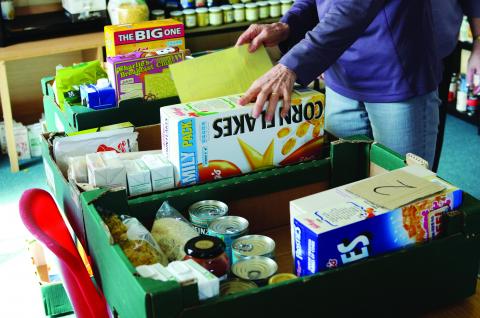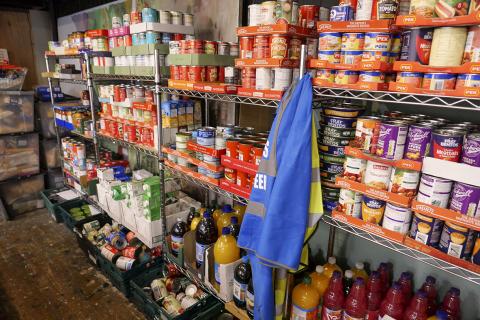Levelling Up on Regional Dietary Inequalities: A Data Story
Why food and diets should be central to the Government’s levelling up agenda
by Shona Goudie
The Government’s agenda on levelling up has an overarching mission to address stark geographical inequalities, ensuring equal opportunity across the UK.
The white paper sets out 12 missions to achieved this. Food has a critical role in several of these missions including:
- increasing pay, employment and productivity
- increasing educational achievement
- raising healthy life expectancy
- improving well-being
- increasing “pride in place”
Here we explore the links between these missions and regional disparities in dietary inequalities, and why government’s future work on levelling up must recognise the vital importance of dietary inequalities, and take further action to improve local food environments and combat food insecurity levels to reduce existing regional inequality on diets.
Regional Inequalities in Health
Children aged 4-5 are more likely to have short stature in the North than the South(6).
Regional Inequalities in Living Standards
Regional Inequalities in Dietary Intake
We also see regional patterns in quality of diets mirroring income and health inequalities.
In the north, on average people buy fewer healthy foods such as fruit and vegetables(14).
And more purchasing of less healthy foods like chips and pizza(15).
Levelling up is an opportunity for government to set out a clear agenda to tackle regional disparities in dietary health and food insecurity.
Diet is the most important factor shaping health outcomes in the UK, and therefore, tackling regional dietary inequalities is essential if we are to reduce regional health inequalities.
Government need to pro-actively set out a plan to reduce food insecurity including: tackling income inequalities through increasing wages, benefit levels and nutritional safety nets, and setting targets to improve food insecurity.
We also need to see government transform the places we live to create local environments that facilitate better health and better settings for people to live in, and promote local procurement to simultaneously boost the local economy and health.
See here for The Food Foundation’s response to the White Paper on Levelling Up.
See here for more on levelling up local food environments.
References
- https://www.health.org.uk/publications/build-back-fairer-the-covid-19-marmot-review?gclid=EAIaIQobChMI0uLyp4rX9QIVhu3tCh0Fpg3AEAAYASAAEgI4yfD_BwE
- https://www.ons.gov.uk/peoplepopulationandcommunity/healthandsocialcare/healthandlifeexpectancies/bulletins/healthstatelifeexpectanciesuk/2017to2019
- https://www.nationalfoodstrategy.org/the-report/
- https://digital.nhs.uk/data-and-information/publications/statistical/health-survey-for-england
- https://www.gov.uk/government/collections/national-child-measurement-programme 2019-20
- https://journals.plos.org/plosmedicine/article?id=10.1371/journal.pmed.1003760
- https://www.ons.gov.uk/economy/regionalaccounts/grossdisposablehouseholdincome/bulletins/regionalgrossdisposablehouseholdincomegdhi/1997to2019. 2019
- https://stat-xplore.dwp.gov.uk/webapi/metadata/dashboards/uch/index.html August 2021; https://www.ons.gov.uk/peoplepopulationandcommunity/birthsdeathsandmarriages/families/datasets/householdsbyhouseholdsizeregionsofenglandandukconstituentcountries 2020
- https://www.gov.uk/government/statistics/households-below-average-income-for-financial-years-ending-1995-to-2020 2018-19. Poverty defined as below 60% median income after housing costs.
- https://www.gov.uk/government/statistics/family-resources-survey-financial-year-201819
- https://explore-education-statistics.service.gov.uk/find-statistics/school-pupils-and-their-characteristics
- https://www.healthystart.nhs.uk/healthcare-professionals/
- https://foodfoundation.org.uk/publication/broken-plate-2021
- https://www.gov.uk/government/statistical-data-sets/family-food-datasets Three year average, 2020.
- https://www.gov.uk/government/statistical-data-sets/family-food-datasets Three year average, 2020.
- https://www.feat-tool.org.uk/ June 2020. Average calculated from local authority averages - regional data unweighted by population size.
- https://ijbnpa.biomedcentral.com/track/pdf/10.1186/s12966-017-0581-0.pdf
- https://researchonline.lshtm.ac.uk/id/eprint/4655475/
- https://researchonline.lshtm.ac.uk/id/eprint/4658937/







